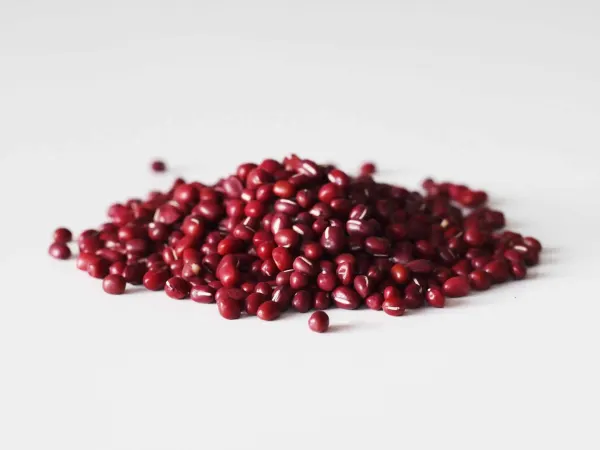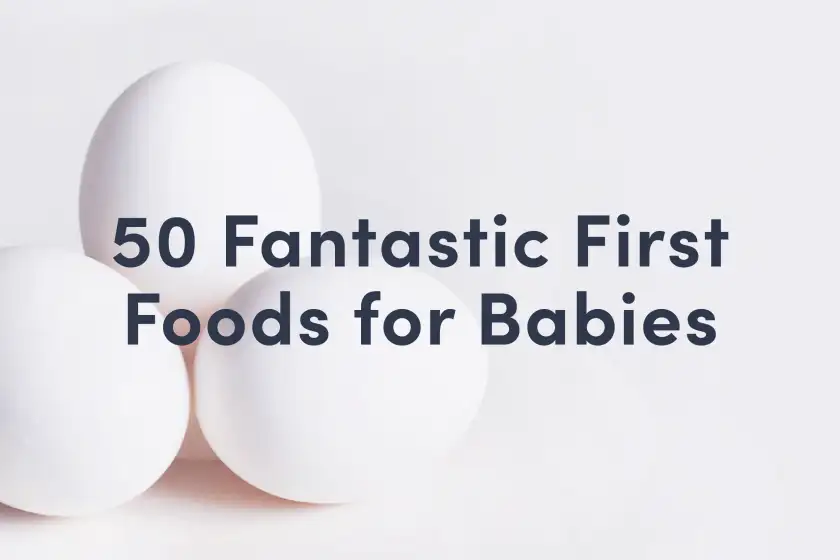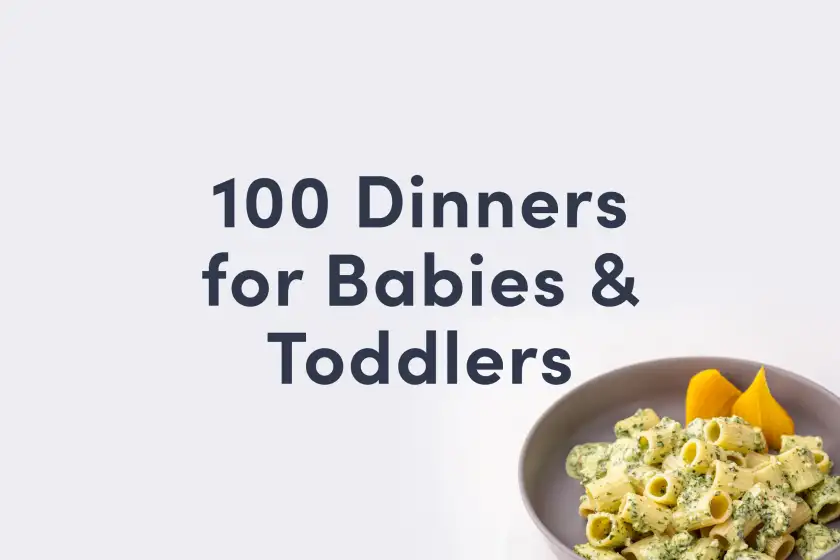Adzuki Bean
Legume
Age Suggestion
6 months
Iron-Rich
Yes
Common Allergen
No

When can babies have adzuki beans?
Adzuki beans may be introduced as soon as baby is ready to start solids, which is generally around 6 months of age.
Adzuki beans originated in Asia, where there are hundreds of varieties in hues from brown to green to black to white, but the red beans are perhaps the best known. Also known as red mung beans, the small adzuki bean was first cultivated in the Himalayas, and over time, it became a staple food throughout the continent, where today it goes by different names, including chori, đậu đỏ, hóngdòu, pat, and ravan.
Are adzuki beans healthy for babies?
Yes. Adzuki beans are an excellent source of carbohydrates, fiber, and protein to help support baby’s developing gut microbiome and fuel growth and development. Adzuki beans are also remarkably rich in potassium compared to other beans, which help supports baby’s heart and electrolyte balance. Like other beans, they are also packed with iron, zinc, folate, and vitamin B6, which collectively support healthy blood, immune function, neurodevelopment, and metabolism.
★Tip: Vitamin C helps baby’s body absorb iron from plant-based sources, so serve adzuki beans with veggies that are high in vitamin C, such as asparagus, bell pepper, cauliflower, or peas.
Are adzuki beans a common allergen?
No. Adzuki beans are not a common allergen, though rare reactions have been reported. Bean allergies have been reported in some patients with allergies to other legumes, including peanut and soybean (which are common food allergens). However, being allergic to one type of legume does not necessarily mean that an individual will be allergic to others, although the risk of having more than one legume allergy can increase. Fortunately, most individuals with peanut or soy allergy are able to tolerate other legumes just fine. Note that adzuki beans are closely related to mung beans so, in this case, allergy to one of these legumes may increase the risk of a reaction to the other.
Individuals with allergies to birch tree pollen and/or Oral Allergy Syndrome (also called pollen-food allergy syndrome) may be sensitive to legumes, such as adzuki beans. Oral Allergy Syndrome typically results in short-lived itching, tingling, or burning in the mouth and is unlikely to result in a dangerous reaction.
As you would when introducing any new food, start by offering a small quantity for the first few servings. If there is no adverse reaction, gradually increase the quantity over future meals.
Are adzuki beans a choking hazard for babies?
Yes. Adzuki beans are small, rounded, and can be firm, especially when raw or undercooked, qualities that can increase the risk of choking. To reduce the risk, prepare and serve adzuki beans in an age-appropriate way. As always, make sure you create a safe eating environment and stay within an arm’s reach of baby during meals. For more information on choking, visit our sections on gagging and choking and familiarize yourself with the list of common choking hazards.
Videos
Can babies have canned adzuki beans?
Yes, canned adzuki beans are fine to share with baby. Some canned adzuki bean products have added sugar. A taste here and there of these sweetened adzuki bean products is fine, but consider waiting until a child is older to serve regularly.
Are the lectins in adzuki beans safe for babies?
Yes. Often called anti-nutrients, these naturally-occurring plant compounds (including lectins, oxalates, and phytates) break down during the soaking and cooking process and are generally harmless in healthy people when consumed as part of a balanced diet. Lectins and oxalates can even offer health benefits, such as antioxidant and anti-cancer properties.
Do adzuki beans need to be soaked before cooking?
No, but soaking them in water prior to cooking can help reduce cooking time, reduce levels of lectin and of a gas-producing carbohydrate, raffinose, and help make the bean’s key nutrients (like iron and zinc) more digestible.
Here are a couple of soaking methods:
Overnight soak: Use a ratio of 1 lb (454 g) of dried beans and 10 c (2 ½ liter) water, and soak the beans in water for 4 or more hours or overnight. Drain and rinse the beans prior to cooking.
Hot soak method: Use a ratio of 1 lb (454 g) of dried beans and 10 c (2 ½ liter) water, and bring the mixture to a boil for 2-3 minutes. Turn off the heat, then soak for a few hours. Drain and rinse the beans prior to cooking.
How do you serve adzuki beans to babies?
Every baby develops on their own timeline, and the suggestions on how to cut or prepare particular foods are generalizations for a broad audience.
6 months old +:
Blend cooked adzuki beans into a paste that baby can scoop. If you prefer, serve the paste with a pre-loaded spoon or thinly spread the paste on thin rice cakes or strips of toast. Alternatively, stir the paste into soft scoopable foods like congee, dal, mashed vegetables, or yogurt. Just start with small portions to minimize any digestive discomfort.
9 months old +:
Offer whole, soft adzuki beans that have been gently flattened between your thumb and finger before serving. Alternatively, continue serving mashed or pureed adzuki beans for baby to scoop with hands or spoon, or use as a dip.
12 months old +:
By this age, you can serve whole, cooked adzuki beans, either on their own or as part of a meal, or continue to flatten individual beans or mash and serve as a paste.
Get recipe ideas for the whole family from our guide 100 Dinners for Babies & Toddlers.
Written by
Expert Tips Delivered to Your Inbox
Sign up for weekly tips, recipes and more!
The content offered on SolidStarts.com is for informational purposes only. Solidstarts is not engaged in rendering professional advice, whether medical or otherwise, to individual users or their children or families. No content on this site, regardless of date, should ever be used as a substitute for direct medical advice from your doctor or your medical or health professional, nutritionist, or expert in pediatric feeding and eating. By accessing the content on SolidStarts.com, you acknowledge and agree that you are accepting the responsibility for your child’s health and well-being. In return for providing you with an array of content “baby-led weaning” information, you waive any claims that you or your child may have as a result of utilizing the content on SolidStarts.com.












